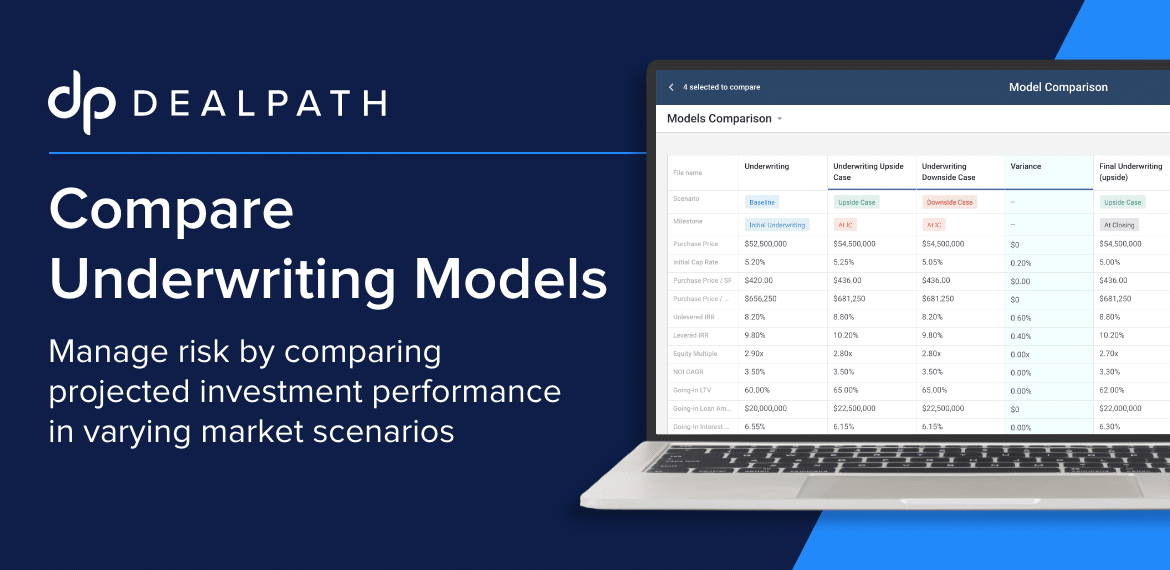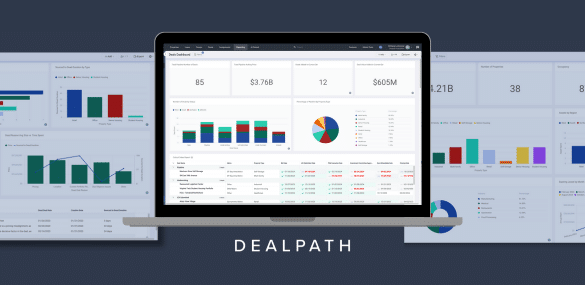From double-checking the accuracy of your data to validating assumptions, well-informed underwriting lays the groundwork for every prudent investment decision. When you layer in inevitable shifts in market conditions, though, determining whether or not the deal will pencil can become challenging.
We introduced a new underwriting model comparison feature back in November to help our customers better manage risk by comparing investment deal performance in varying market conditions.
Read on to learn how leading institutions are comparing underwriting models in Dealpath to understand if a deal meets their target risk profile.
A New Way to Understand the Impact of Shifting Market Conditions
Any given underwriting model is only valuable for projecting asset performance when the assumptions guiding the financials remain accurate throughout the lifecycle of the owned asset. Comparing underwriting models in Dealpath gives your team the most granular visibility available in the market today to understand the impact of shifting economic conditions on your return profile.
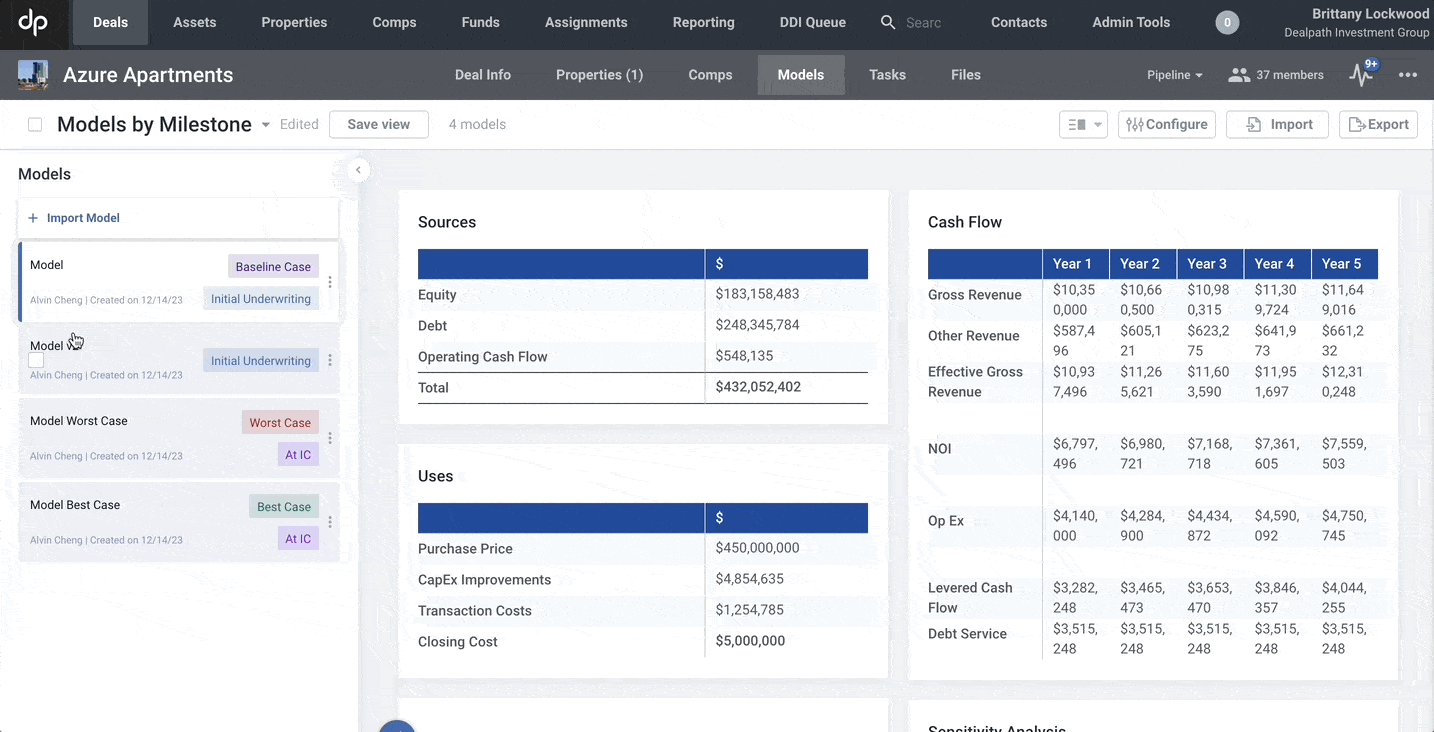
Whether conditions change due to shifting interest rates, fluctuating demand or other macroeconomic factors, investment teams can now gain real-time visibility into how these fluctuations could impact return profiles.
How You Can Use Underwriting Model Comparisons
Many of the industry’s leading deal teams have already surfaced actionable insights by comparing underwriting models at multiple stages in the asset lifecycle.
Compare Underwriting Models to See If a Pipeline Deal Pencils
As your team is underwriting new deals, comparing underwriting models helps teams to better understand which deals pencil out, even if the most challenging scenario comes to fruition.
Comparing projected investment performance across different scenarios, such as base, bull, bear and any others that might be helpful for your team to understand, gives your team heightened visibility into potential return profiles. Consequently, you can determine if the deal meets your target risk profile.
For example, a deal might align well with a fund’s risk profile in a bear market, but not in a true downturn.
As Conditions Change, Project Investment Performance
Beyond pipeline deal evaluations, firms are also comparing underwriting models to project owned asset performance. Market conditions are always changing, meaning the assumptions that were true at close are subject to change.
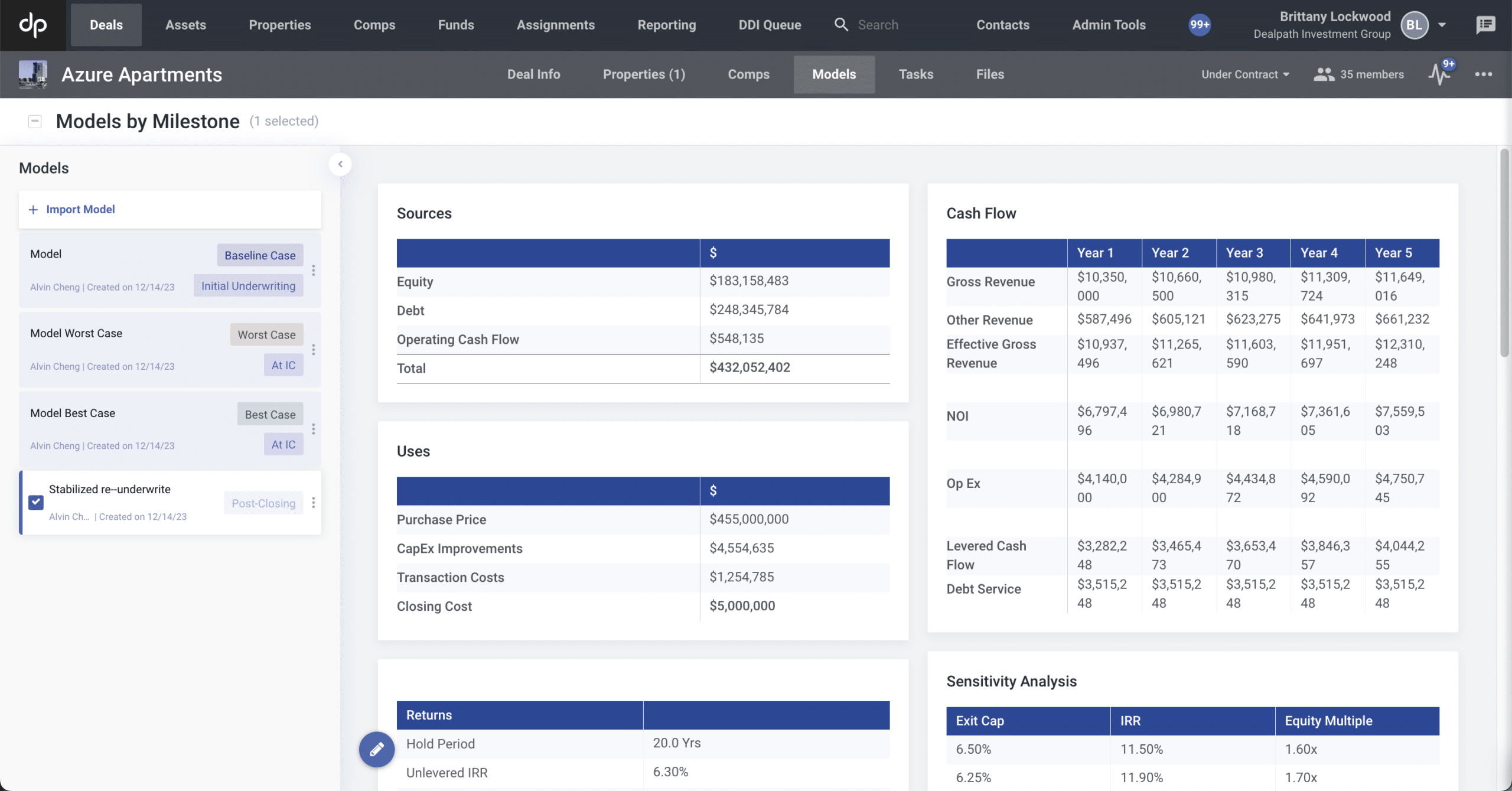
As asset management teams re-underwrite deals across their portfolios, they can better understand how owned assets will hold up against shifting market conditions. If a particular asset in your portfolio will not hold up to the projected return profile in light of recent market fluctuations, the asset management team might flag it as a disposition opportunity.
Comparing original underwriting models against models updated based on current assumptions can also aid in analyzing underwriting accuracy.
How Underwriting Models Comparison in Dealpath Works
Underwriting model comparisons in Dealpath can be configured to best meet your organization’s needs.
Drag and Drop New Models Into Dealpath
Adding a new model to Dealpath is as easy as dragging and dropping an Excel file into the platform. Mapping data in your underwriting models to Dealpath ensures that all of the data will populate in the correct cells, helping you to analyze model comparisons with clarity and precision.
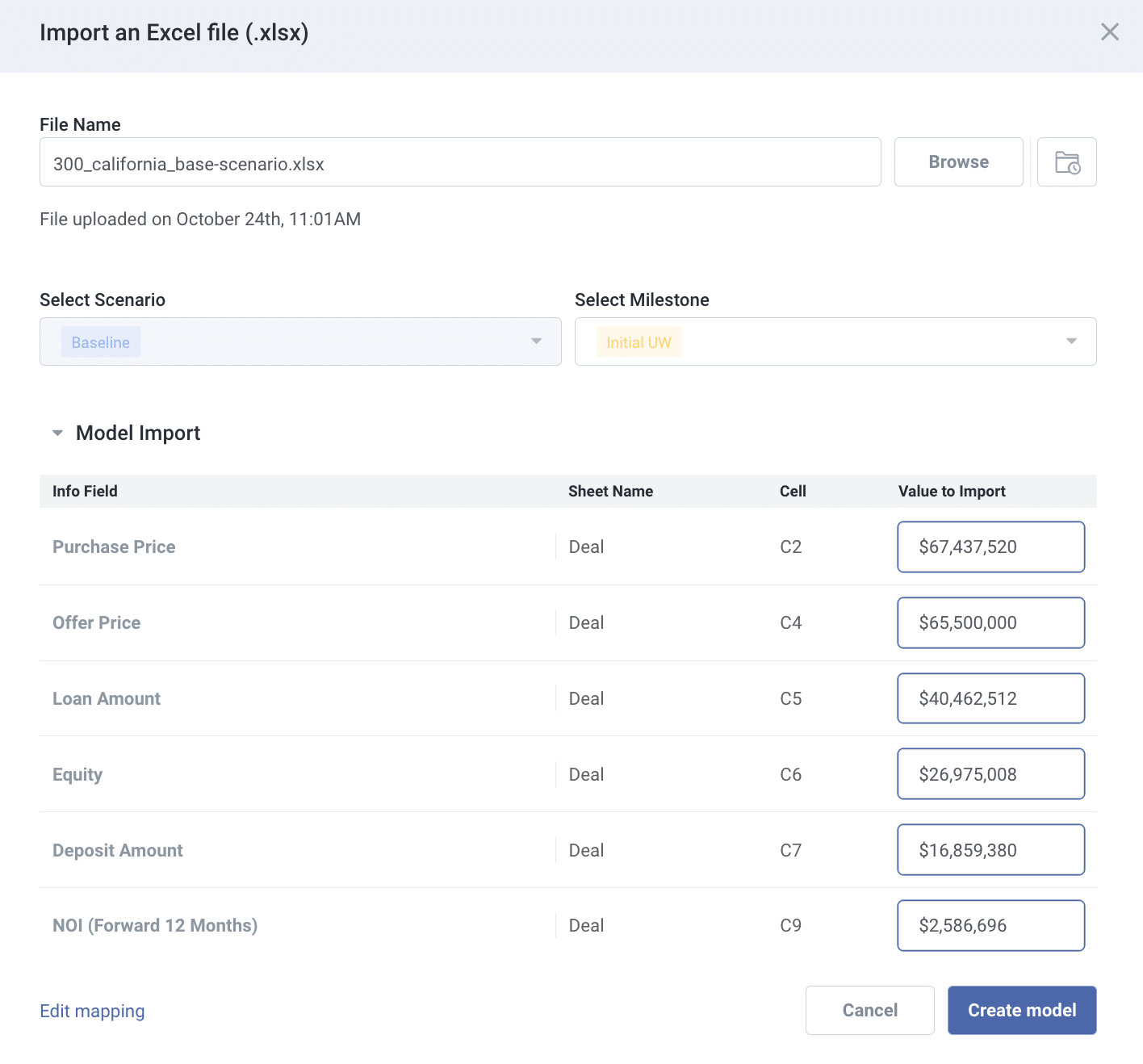
Select the Data Points that Matter Most to Your Firm
Every model version can be viewed, filtered and sorted by milestone, creator, date and more, making it clear which scenarios are being compared and which information is most up to date.
For example, if population metrics and occupancy rates are particularly important for urban multifamily deals, then you can configure model comparisons to reflect that.
Your firm can save various views to easily analyze every deal through your unique lens.
Drag and Drop Columns to Understand Variance
After uploading the underwriting models you want to compare, drag and drop the scenarios to view the variance. For example, compare the bull case to the best case scenario to see how particularly strong tailwinds would impact returns. Conversely, view the difference between the bear and worst case scenarios to see what the return profile might look like in the face of strong headwinds.
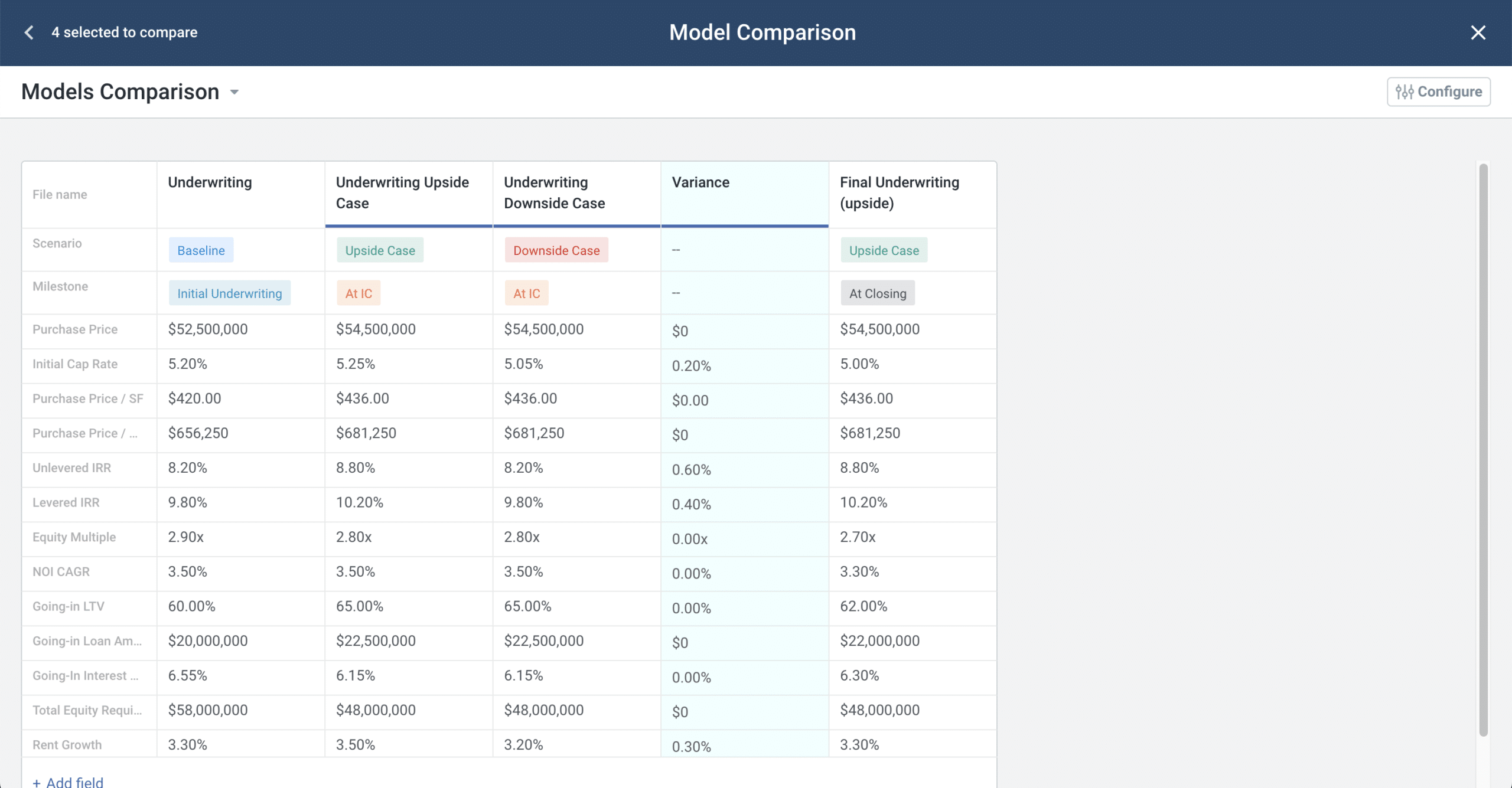
View Projections at Every Milestone
As you learn more about the deal you’re underwriting, your assumptions will naturally be refined. With just a few clicks, you can see the differences between your initial underwriting model and the one created after due diligence is completed and your assumptions are more solidified.

Uploading new models as deals progres offers a holistic view of return profiles at each stage of the deal lifecycle, helping your firm to memorialize how models change over time, sharpen underwriting assumptions and make smarter investment decisions.
Start a Conversation About a Model or Data Point
If a data point like the cap rate or purchase price looks particularly low or high in a model comparison, start a conversation with your deal team directly within the underwriting model to prompt a team member to refine these assumptions. Bringing this discussion directly to the model comparison view ensures that stakeholders and team members can view the relevant context required to make the best decisions.
Elevate Data-Driven Decision Making With Dealpath
From streamlined deal screening to enhanced underwriting to surfacing market trends, centralizing your pipeline in a proprietary deal database positions your firm to win as the arms race for data analytics in CRE continues. To learn how leading institutions manage risk and supercharge data-driven decision making with Dealpath, schedule a meeting.
Schedule a Meeting
